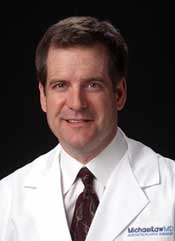Libyan Dermatologist, Dr. Elghblawi, expresses her passion towards aesthetic medicine and continues to develop her skills in cosmetic medicine further.

Name: Dr Ebtisam Elghblawi. MD, MBBCh, MScRes, ADD, DRH and PGC skin cancer
Clinic: Tripoli, Libya
Specialties: Clinical, medical and aesthetic dermatology
Website: l2106.wordpress.com
Brief Bio:
I am based in the capital. (Tripoli)
I am not that big and I am not with the idea of having a busy crowded clinic as many do. I believe on quality rather than quantity and patient satisfaction would generate eventually loyal patients.
I am very keen passionate to master facial aesthetics. I always want to improve my current skills, scale them up and increase my knowledge in Aesthetic as it’s a dynamic medicine. It’s about the concept of “less is more" with minimally invasive procedures. So it’s about how to not guess the patient age and not to know if the patients had any work done already, just being looked refreshed and contented.
I developed passion about aesthetic dermatology and want to learn the art and the skills of it to tailor it accordingly. It’s delivering harmonious beautification and not overly done procedures with pleasing aesthetic results which will positively impact your patients’ lives. I personally want to create a pleasing reflection when my patients look into a mirror. Which would give them inner empowerment and which make a difference in peoples’ lives and create a self secure state. I am always eager to learn more and more.
Question: Can you tell us a little bit about you and how you got started in cosmetic medicine?
I started in 2012 embarking and learning about the aesthetic dermatology in great details to learn the basic knowledge, essence and the foundation. Plus learning the science behind emerging aesthetic medicine based products and devices. It’s a wide field and every time it keeps changing as I said up about medicine development. Even now I can speculate that the future in aesthetic for face lifts by facial threading as its emerging strongly in the market. It’s a huge market though and any one should be familiar and well oriented about its pros and cons in order to avoid fatal mistakes and patients disappointment. It is very vital to meet patient’s expectations at the first place, in order to gain their trust and develop a mutual rapport and understanding which I consider the backbone to any booming procedures. I started developing my own skills from reading extensively and attended some training workshops abroad plus subscribing to attending online webinars and sharing views, procedures and results.
I am inborn artistic as I do drawing as a hobby since I was young and I believe tasting beauty and performing it would help to achieve the desired subtle changes to enhance beauty in an acceptable and a comforting manner. I dislike extreme changes which would imply and reflect negatively.
A person per se is a piece of art, a sculpture, and herein we are creating a beauty. We have to look at each person face objectively. Moreover the market currently is looking at attraction and beauty the most and aesthetic work should improve the quality of people lives. Aged skin involves a lot of physical process, starting off with the photo-aging and the process of aging itself, where skin become thin, loss its elasticity, elastin and collage, fat, and with imminent bone resorption and become loose, redundant and sagging with gravity which would impact our wellbeing and self confidence.
The face should have divine measures. We have to look for artist for each client faces. Patients are exceptionally critique due to many brands across the market.
Moreover as I said, medicine is evolving speedily and constantly and a new lesson to gain and learn is essential. We learn over time and nowadays practicing medicine is uniform across the world as its all connected by the well developed technology, the ‘internet’, and is only culturally differs. Medicine after all is Nobel and risky profession. “The day we graduate medical school we say, “Doctor do no harm.” Thus taking care of the patients by listening to them wisely and addressing their worries, show empathy and compassion and meeting their expectation is a triumph to any doctor.
Any medical practitioner has to have the appropriate training; in-depth knowledge based learning, expertise and experience to perform the procedure and to deal with all routine aspects of care and any likely complications. It is very essential to be reacquainted with facial anatomy and should pay a careful attention to the dangerous zones of the face, where detrimental complications can happen, namely vascular obstruction, tissue necrosis and permanent blindness.
Nonetheless, in reality nowadays, many registered medical doctor has started performing non-cosmetic surgical operations without proper qualifications from an accredited training body at all. There should be some guidelines and appropriate regulations with licensing that would have had more force, and offer more protection to the public and for doctors towards having appropriate qualifications and proper training. Nonetheless, it stops short of mandating a minimum qualification. The decision as to the level of expertise or experience is left to the doctor.
In the least practicing doctors should have the required knowledge, expertise and experience. However, no one is immune as in fact many qualified surgeons also harm patients and generate complaints.
The public trust the level of training and supervision involved is some reassurance a minimum level of skill has been obtained. The problem is always, ‘oversimplified the procedures and overstated the results’, which would have a strong impact on patients’ attraction as many medical practitioners do. It is after all the integrity of the treatment which should be the main concern for any medical practitioners.
Moreover, additional local anaesthetic may be administered, and this could lead to an overdose, which is potentially fatal if was not used wisely.
Some cosmetic surgeons have a significant conflict of interest – putting patient interest ahead of profits. Also it’s mandatory that ethical obligations to patients supersede profits. This is an important first step, but it cannot be the last. Also subtle changes would help rather than looking like aliens.
Moreover, patient assessment and informed consent is mandatory for the medical practitioners to provide and convey clear information about risks and possible complications.
I myself offered some patients who wanted to have cosmetic for a change and cannot afford the high prices, and to feel confident by injecting them for free and paying only the price for medicine from the dealer. I am trying to help my patients to have the face that they want to feel better in and out, and I offer empathy that many doctors lack, and I know what I am doing. I constantly stop while performing the procedure and let the patient to look into the mirror to show and explain what I am doing. One patient I recall told me that these changes changed her life and made her feel good and even men complimented her at work. It is always good to not putting profit above the wellbeing of our customers.
Nowadays, there are procedures done by the girl who runs the tanning bed shop or a local hairdresser and it is atrocious.
I give myself top-ups with fillers and Botox. I know the human face better than many expensive surgeons, and I can even do procedures on myself proudly speaking. Many of my cosmetic colleagues just inject patients and did not try on themselves at all and wondering why not to have the feel of.
I take the say of “I wouldn’t perform a procedure I had not had done on myself, to experience the procedure myself. We need to protect anyone who has cosmetic procedures and I should know – I have been under the needle and behind it.
Conversely, women have long been held path to a higher aging standard than men, but it appears as though that gap may be closing, as now men are joining in women, and “They realize that they also want to look and feel their best, and to maintain a healthy and youthful appearance especially when older work in a younger men workforce environment. Botox for instance, helps turn the frown line upside down and sometimes as the say of ‘The person looking back in the mirror is not the person you feel like’. It’s called ‘Brotox’ for men.
Men nowadays are much more open and proactive about their appearance. And this can be explained to the reason of quick fix with no downtime for starters.
It has been found that youthful appearance can generate more revenue than their older looking peers, and the widespread accord that men require higher doses of Botox than their female counterparts.
Many men do secretly Botox ‘little and often’, where nothing is severe really. Vain middle aged men like to call it a ‘Brotox’ and like to give it a go. Botox is shameless vanity, an expensive, self indulgent secret.
The ‘English look’ is where a skillful needlework given to freshens up a face rather than creating a creepily smooth forehead. It is always better to address the face as a whole to look better and not necessarily different.
The general joking say is ‘the more fit men are, the worse they look, they look close to death’. As in fact heavy exercise causes fat to drain from a needy area and build up in parts of the face where it conveys an ugly look for men. Brotox is meant to just accentuate masculinity which means improving the jaw line rather frown freeze thing.
Men who have tried Botox look better, feel better, and believe it gives them a competitive frame. Furthermore there's also less of a stigma associated with cosmetic procedures nowadays and they don’t see it a taboo treatment as used to be and they believe on the importance of maintaining a youthful look. After all, skin treatments can improve their looks and self-confidence.
Lastly, it is always the ubiquitous search for eternal beauty and youth which won’t stop at all and always will be developing and evolving.
Question: Can you tell us more about your clinic?
I don’t have my own clinic. However I always suggest some changes and offer some ideas to make the clinical practice more appealing, charming and attracting. The aesthetic in Libya is still kind of primitive and I expect to grow more across the coming years. The clients can vary unexpectedly and both genders nowadays want to look their best, refreshed and alluring.
The services I do are mostly clinical and aesthetic dermatology, namely, Botox, filler, PRP, chemical peeling and laser technology.
Question: Staffing is always something that physicians are interested in. Can you give us some insight into how you hire and manage your staff and what you’ve learned?
Not applicable.
Question: What IPL or laser technologies are you using? What are your thoughts about the technologies you’re using now?
I have worked with Candela laser gentlelase for hair removal and was a good pleasing experience. I know IPL is not that effective as the laser itself and I have written a paper about it and hereby the link to it;
• Alex Laser Hair Removal with Candela GentleLASE®; http://blog.healthjobsnationwide.com/alex-laser-hair-removal-with-candela-gentlelase/
Question: How do you market your clinic?
Not applicable.
However, from what I am seeing recently that most uses the social media, face book to generate, advertise and promote about their works and I think it conveys the message strongly, however we have to be very careful about spreading and disseminating our work and it should be the truth and not just selling sparkling and dazzling words. We have to reflect precisely what we do to gain and keep patients trust.
Question: What treatments or services are most profitable for you?
I can’t comment precisely about this as I am not that kind of a doctor who likes to have a lot of patients to work on one go. I like to work in peaceful, calming and quite environment to create, innovate and deliver a quality appealing results that patients will like, and not a quantity results.
My patients come to me and most often, the first thing they say is, I don’t want to look done. In fact, some of my patients don’t tell anyone they have had work, not even their partners. They simply want to look refresher and good.
Question: What have you learned about practicing cosmetic medicine? What stories can you tell?
What I can add is that we have to listen to our patients sensibly and address their main concern and worries and don’t give unrealistic expectation to avoid misfortune and disappointment which would incur a lot of problems, plus will affect our reputation.
Addressing patients’ main expectations and checking out realistic outcomes are the main goal in any successful aesthetic practice. In many instances some patients do have body dysmorphia whereby they never appreciate nor see any positive outcomes even if it was subtle. It’s after all, patients own perception of their body and they could just make unnecessary troubles.
I happen to see lately a lady that I feel sorry for her. She did filler since few years that she is not aware of the kind injected and I think it was calcium hydroxylapatite (CaHA) and the issue caused her four big hard stony nodules in her smile lines and cheeks. I sought medical advice from abroad to try sorting her out and called her twice. However she responded but declined attendance, and I kept thinking of her I must say as its really a tragic misfortune that could happen to any injectors.
Also sometimes you keep explaining to the patients and it seems they are mute and cant digest it well. For example a lady with a facial and neck sagging skin came to me and I advised according to her budget to have her face done in stages to appreciate the subtle changes. So basically I told her we can do the forehead with Botox to relax it and improve a bit the two long deep vertical lines around the glabella and I explained that we might even need filler to smooth it out after filling it and for the neck I can start with short mono lift threads and I even didn’t charge my hands work. She only paid for the goods, and after that she came complaining that she just wasted her money and didn’t see nor appreciate that changes though it was obvious and clear. She kept saying that the forehead is only a skin over the bone and doesn’t have any muscle really and that I didn’t do anything really for that. And as far as for her sagging neck, I explained it needs time to see the subtle changes and might need more needles the cog ones or the silhouette soft lift. However she is not prepared to pay for them as they are costly. Moreover she declined me taking photos after where I can compare and show her the changes that she cant see really. Some patient can be so stubborn that won’t see nor appreciate and just give you a hard time and put blame whatsoever on you and accuse you with all sorts of reasoning. You explain and even tell them to read on the internet to have the basic feel, and the knowledge; however it is as you throwing words in the air. Nothing really would work and such patients should be declined at the first instance as they will only waste your time, create troubles and give you a hard time.
Another story a lady who has pigmentation on her face and came and demanded a clearing up for her face skin. I explained about the chemical peeling and what is expected and all can her brain process is having a baby pink skin and other drawbacks her brain couldn’t digest. So she kept coming and blaming me for that as its my own fault. They think all just can happen in a glimpse of time.
Another story that a lady who had a deep simle line and a big fatty face demanded filling up those lines and declared she wont pay for more than one syringe of one cc. I had managed to make her dream come true through that and was an amazing sublte correction that my colleague appreciated it well by that small amount. However she kept coming and complaining and said it wasn’t as she wished.
Another story a lady who had filler for her smile line and a tiny bit on the sides of her lip, kept complaining of angioedema and thought its due to the injected filler. Though her examination didn’t show any lumps and after a through investigations, found that she fancy taking red chili plus she had bad teeth hygiene and gums troubles.
Another story from a greedy colleague who wants to make profit on you. A patient I did since sometime and she was content and all went well. This colleague obviously has no morality. He didn’t pay my money and despite of that called the patient and told her if she has any problem that she can complain about me and took all that as an excuse to not pay my money for the lady I did. Anyhow after 8 months she shown up in another clinic that I work in and she knew me and was happy about my aesthetic services and told me that the greedy colleague wanted to use her for his own sickness and asked her to complain if she didn’t like my work which obviously she declined as in fact she is happy with the results she achieved by me. It seems sometimes that colleague can act badly and secretly and the sky is the limit.
Question: What advice would you give to other physicians based upon your experiences?
I always emphasize the foremost on is listening to our patients carefully and addressing their main concerns and needs in order to reach a good settlement that would give a pleasant experience which would mean keeping the work on even in the future once patients gained the physicians trust. It’s also vital to weigh things between patient needs versus patient wants.
Cosmetic involves and covers all phases from patient assessment through to aftercare. And a small wrong thing in patients is unforgettable. Plus it’s highly recommended to document every small thing because patients keep forgetting especially when it comes to cosmetic.
I always like to provide quality aesthetic procedures to my patients. It’s important always to learn how to develop and sharpen our aesthetic eyes, and keep up to date with the latest studies, researches and technology in the field of Aesthetic Medicine.
We all know that aging process is inevitable. Thus, it’s vital to understand the concept of the aging process and the proper aesthetic analysis in order to create and correct. I recently joined a course which addressed the 4 ‘R’, which stands for; rejuvenation modalities- (Resurface (skin care), Relaxation (Neurotoxins), Refill and replenishment (Dermal Fillers) and Re-suspend and boost (Face-lifting).
It is not the injectable but rather the injector who makes the difference after all once mastered the art. It’s also important to hear to the patient feedbacks in order to improve, master and innovate.
Lastly, it’s about safely enhancing the patients’ current beauty without altering their natural facial features. After all, People are now more conscious about their outlook and they scare the aging process and wish to defeat it.












